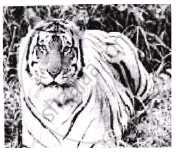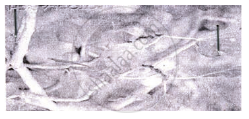Advertisements
Advertisements
प्रश्न
What are the major causes of species losses in a geographical region?
उत्तर
Causes of Species Loss:– The number of organisms in different communities keeps increasing and decreasing. As long as the original species is present in an ecosystem, the number of members of the species keeps on growing. The important characteristics in its gene pool become extinct when the original species goes extinct. This is a natural process, but due to human intervention, the whole world is facing an increasing rate of species loss. The main causes of species loss are as follows –
- Habitat Loss and Fragmentation:– Due to human intervention, the natural habitats of organisms have been destroyed. Due to this, the destruction of species has happened at a very fast pace in the last 150 years. Due to human interests, there is a continuous increase in industrial areas, agricultural areas, and residential areas, due to which the area of forests has decreased from 18% to about 9%. Habitat loss is the main reason for the extinction of animals and plants. The vast Amazon rainforest has been cut and cleared for soybean cultivation and animal pastures. Millions of species living in it have been affected, and their lives are in danger. Apart from habitat loss, pollution is also a big threat to the species. Human activities also affect species habitats. When large habitats are divided into small fragments by human activities, then the mammals and birds that need more habitat are badly affected, which leads to a decrease in the population.
- Over-exploitation:– Humans have always depended on nature for food and shelter, but due to greed, humans are over-exploitation of natural resources, due to which many species are going extinct. Due to overexploitation, many species have become extinct in the last 500 years. Many marine fish species are decreasing due to hunting, due to which many species of commercial importance are in danger.
- Alien species invasions: When alien species are introduced into an area for any purpose, either unintentionally or deliberately, some of them become invasive and cause the decline or extinction of indigenous species. Invasive weed species like Carrot Grass (Parthenium), Lantana, and Hyacinth (Eicchornia) have become a threat to the environment and other indigenous species. Similarly, the African Catfish Clarias gariepinus was introduced into our rivers for fisheries, but now these fish threaten the indigenous catfish species of our rivers.
- Co-extinctions:– When a species becomes extinct, other animal and plant species dependent on it also become extinct. For example - when a host fish species becomes extinct, then its specific parasites also start getting extinct.
- Shifting or Jhum cultivation:– The tribes living in the forests hunt various animals and obtain food. They do not have any fixed residence. They keep moving from one place to another for livelihood. They farm on forest land. For this, these tribes often burn and destroy the trees, plants, and grass of the forest. This type of agriculture is called Jhum agriculture. Due to this, wild species are affected due to a lack of space.
APPEARS IN
संबंधित प्रश्न
Can you think of a situation where we deliberately want to make a species extinct? How would you justify it?
Very short answer type question
What do you understand by the EW category of a living being?
Enlist any six categories into which a given species is placed once it has been thoroughly evaluated by IUCN.
Match the following and choose the correct alternative.
| Column I | Column II | ||
| i. | Not evaluated | a. | Pervasive and abundant after careful assessment |
| ii. | Near threatened | b. | Information related to risk of extinction is lacking in some way |
| iii. | Least concern | c. | Described by scientist but not assessed by the IUCN |
| iv. | Data deficient | d. | May meet the criteria for threatened status in the near future |
Which among the following is a TRUE statement?
What is common to lantana Eichhomia and African catfish?
Which of the following statements is correct?
IUCN means
Match the animals given in column I with their location in column II:
| Column I | Column II |
| A. Dodo | i. Africa |
| B. Quagga | ii. Russia |
| C. Thylacine | iii. Mauritius |
| D. Stellar's sea cow | iv. Australia |
Choose the correct match from the following:
What is common to the following plants: Nepenthes, Psilotum, Rauwolfia and Aconitum?
What could have triggered mass extinctions of species in the past?
What does 'Red' indicate in the IUCN Red list (2004)?
What is common to the species shown in figures A and B?
 |
 |
| A | B |
What is common to the species shown in figures A and B?
 |
 |
| A | B |
Explain the concept of "co-extinction" by taking two examples.
Though the conflict between humans and wildlife started with the evolution of man, the intensity of conflict has increased due to the activities of modern man. Justify your answer with suitable examples.
The species placed in CR category is ______.
When a species goes extinct in one area, it is often desirable to re-introduce the species from other populations. A major problem with this approach is that ______.
Which of the following regions of the globe exhibits highest species diversity?
